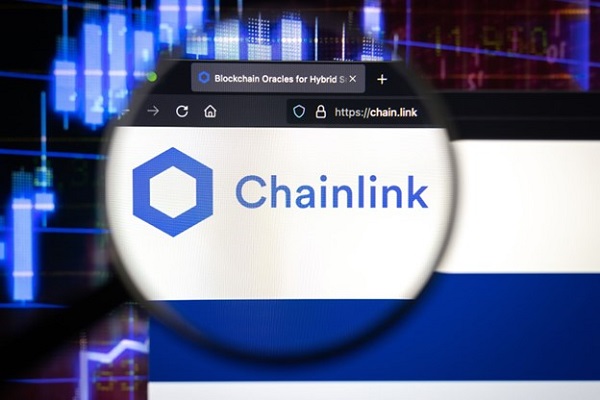A recent collaboration between Chainlink Labs and the Australia and New Zealand Banking Group (ANZ) has set a new benchmark, demonstrating the potential of interoperable blockchain solutions.
Meanwhile, an emerging crypto, InQubeta, is making waves, positioning itself among the top ICOs that could be set to outpace established platforms like Polkadot.
Chainlink and ANZ unveil game-changing integration
The collaboration between ANZ and Chainlink Labs marks a significant milestone in bridging the gap between traditional finance and DeFi. Utilizing Chainlink’s Cross-Chain Interoperability Protocol (CCIP), ANZ showcased the seamless settlement of tokenized assets across the Avalanche and Ethereum blockchain networks. This demonstration of cross-network asset trading and settlement in different currencies is a testament to the innovative spirit driving the blockchain industry forward.
At the heart of this initiative is the Delivery vs. Payment (DvP) model, a cornerstone of securities transactions, now reimagined in the blockchain domain. By tokenizing assets and payments on a unified blockchain infrastructure, ANZ aims to revolutionize traditional DvP processes, ensuring secure and intermediary-free settlements. This collaboration not only underscores the convergence of traditional and decentralized finance but also highlights the expansive potential of blockchain technology in transforming financial services.
InQubeta: embarking on a journey to redefine crypto and AI
InQubeta, meanwhile, is making its own splash in a sea of innovation where Chainlink and ANZ’s collaboration has already turned heads. But this isn’t just any new ICO on the blockchain block. InQubeta is on a mission to blend AI with blockchain in ways we’ve only dreamed of, aiming to transform how we think about and invest in technology.
Here’s the deal: InQubeta is breaking down the ivory towers of AI startups, making them accessible to anyone with a bit of QUBE, their revolutionary token. It’s about flipping the script on the traditional investment model, injecting it with a dose of equity, transparency, and dynamism that the sector has been craving.
Picture InQubeta as the linchpin of a new digital era. It’s where AI and blockchain don’t just coexist but collaborate, solving problems, boosting efficiency, and igniting innovation. It’s a world where backing AI startups isn’t just for the tech elite anymore — thanks to InQubeta, anyone can be part of shaping a future where technology amplifies human creativity.
InQubeta is also pioneering the use of NFTs that give investors a real stake in AI startups, paving the way for an investment landscape that’s not just inclusive but genuinely impactful. Alongside plans to bridge different blockchain networks and introduce a deflationary token model, InQubeta isn’t merely competing with giants like Polkadot; it’s lighting the way for the fusion of AI and blockchain.
The buzz is real, and it’s loud. InQubeta’s presale success and its steadfast focus on security have investors queuing up, all eager to be part of this journey. InQubeta isn’t just navigating the currents of change—it’s steering us towards a union of technology and finance, heralding a new dawn of innovation and collaboration.
Conclusion
Groundbreaking collaborations like the one between Chainlink and ANZ are paving the way for a future where finance is not just decentralized but seamlessly integrated and bursting with innovation. Amidst this backdrop, InQubeta gains traction as an emerging crypto platform, boldly pushing the boundaries where AI meets blockchain.
It’s more than just aiming to surpass the likes of Polkadot; InQubeta is on a mission to carve out a transformative path, reimagining the potential at the crossroads of AI and blockchain technology. InQubeta invites us on an adventure to a future where the combined power of AI and blockchain is not just a concept but a reality, opening up a world where innovation is limitless.
For more updates on the InQubeta presale, visit their official website or join the InQubeta Communities.
This news is republished from another source. You can check the original article here


